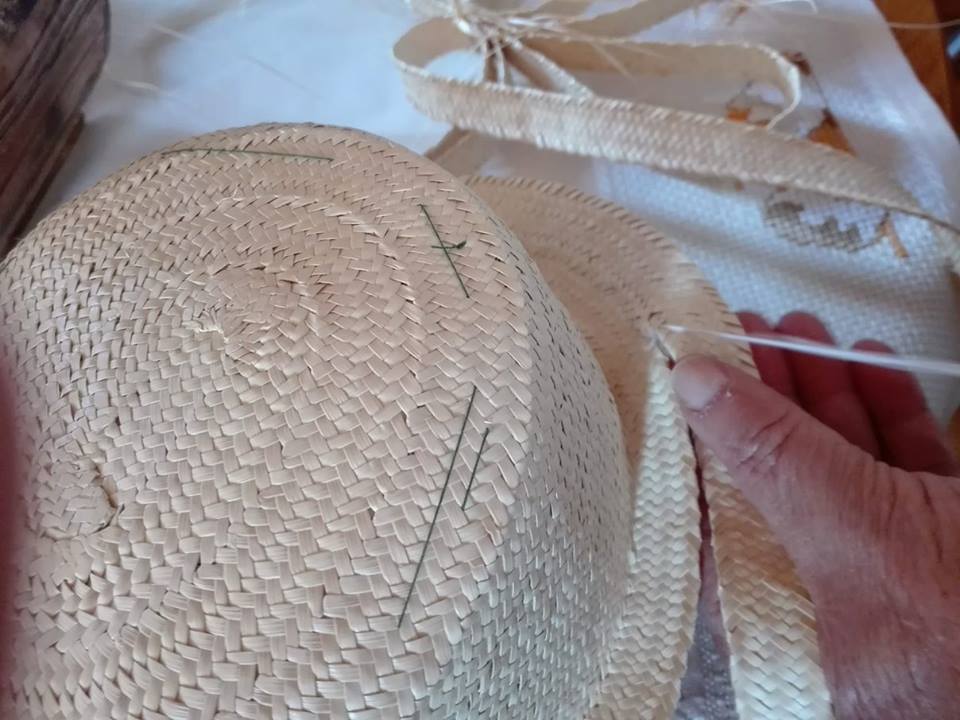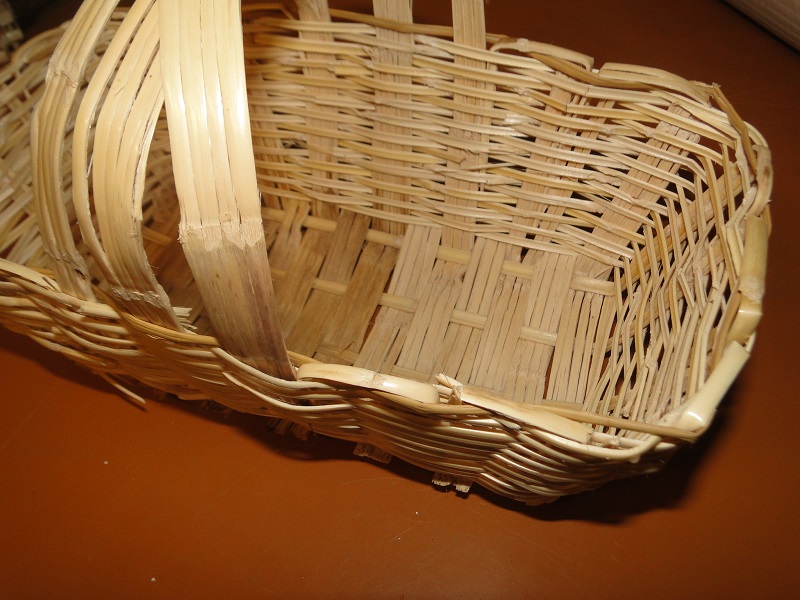Local craftsmanship is in a lag phase, the number of active artisans has been decreasing due to their advanced age. As a result of the times, there hasn’t been an interest by younger people in taking on this type of activity, which requires art, patience and above all, a passion for the work. Following are some examples of local craftsmanship.
The palm hearts are tender leaves of Canary Island Date Palms (Phoenix canariensis). After dried and subject to several treatments, they are transformed into strips, braided and later sewn and moulded by the artisan, leading to beautiful hats and purses. In turn, the fresh palm hearts, made from the tenderest of leaves, after being embroidered, are sought after for the Palm Sunday procession, at Easter.
The giant cane wickerwork (Arundo donax) is an art that demands patience and a strong, skilled hand. The stalks of the plants have numerous applications and can be used as rattles, fishing poles, supports for climbing plants, capping for vineyards and orchards, rods for the frames of tent mats used for protection from the sun, stakes for the grapevines as traditionally done in Porto Santo, small lattices for the tomato plants, traps for lizards, snuff boxes, wind-breakers, under-covers and partitions for the old “casas de salão” (Salão houses) and “tabiques”(bulkheads), fishing creels, cane carts, the making of whistles and “pifos”(typical pipe instrument of Porto Santo), pipes, the musical instruments of the scissor sharpeners, frames for sieves, the construction of cane mills with sales, decorations for the nights of Saint John, among other uses. Currently they are still used as protective hedges in the vineyards and beach dunes, as well as animal fodder.
By all accounts, Porto Santo had the greatest variety of clay such as argil, pozzolan, chalk, marl and this is where thick, resilient bricks applied in the construction of the fortress of Pico do Castelo were made, as well as in the shelters. The raw clay (salão) was used to cover poor old dwellings and would crack and split open in the summer, but would close up with the first rain and no water would pass through. Also in Porto Santo, roof shingles were manufactured and sold with the mark of S.V., the initials of Sebastião de Vasconcelos. Furthermore, some artisans, taking advantage of the existing natural resources, dedicated themselves to working clay, leading to the tradition of the making of shepherd figurines, among others. Whereas in the past they were shaped by hand and dried in the sun, today they are mostly turned with the help of a potter’s wheel and then fired in a kiln. Some pieces are on display at the Museu Etnográfico of Madeira (Ethnographic Museum of Madeira) and at the Casa Museu Frederico de Freitas (Frederico de Freitas House Museum).
In the old days, girls and women would dedicate their time to Madeira embroidery in Porto Santo, as a livelihood activity. It is said that when the person in charge of the embroidery reached the island, the women would run to the beach to receive the orders. Because there was a large number of embroiderers, the best and quickest would be chosen, making this job the sustenance of many families in the past.
Originating in the XVI century, Madeira’s cobblestone, preceding Portuguese cobblestone, used black and white stones of basalt and reef limestone respectively, gathered from the beaches and pebbles of the archipelago. This floor coating technique is still present today in different places on the island of Porto Santo, forming a historical and heritage reference of the island and reflecting the lithological geodiversity of the place. In the square of the Pillory, in the courtyard of all the churches and in the different buildings, the artistic displays of the paviours through what is known as “black and white stone embroidery”, can be seen.
It is worth noting that there are other pieces of typical craftwork, such as the miniature windmills and work done with seashells taken from the sand. Notwithstanding the tradition that is still upheld, different creative craftwork showing new ways of expressing art, culture and local identity, have started to appear. Part of the crafts can be found in the city centre, in the Loja do Profeta (Prophet’s Shop), where they are displayed and commercialized.




